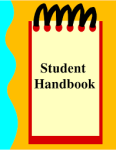Your first interaction with parents has to be a positive one! They may have heard through the ‘grapevine’ of other parents, teachers or students the kind of teacher you are.  Your job is to confirm their already positive opinion of you or to win them over despite what they’ve heard. In reality, Open House may be the only time you have parents for face-to-face communication – make the best of it!
Your job is to confirm their already positive opinion of you or to win them over despite what they’ve heard. In reality, Open House may be the only time you have parents for face-to-face communication – make the best of it!
Open House/Meet the Teacher Night is the perfect place to start. To ensure things go smoothly, begin getting ready for open house before school starts. Once pre-planning begins there are other things that will compete for your attention, so start early!
Put together an informational packet for parents that also has a questionnaire. Include questions about parent expectations for the year, things that have worked well/haven’t worked well in past years, what mode of communication they prefer, do they have skills/interests that could enrich your class. Parents are more than willing to give you information about their student. By asking, you are letting parents know that you too are interested in their success.
Put together a class handbook, include portions of the school handbook but add classroom specific information.  Include a bit of personal information about yourself so you create affinity with parents. Brag a bit on your qualifications; it is reassuring for parents to know that the teacher likes school and continues to learn and hone their craft. Let parents know what you will be doing to ensure the safety of their student.
Include a bit of personal information about yourself so you create affinity with parents. Brag a bit on your qualifications; it is reassuring for parents to know that the teacher likes school and continues to learn and hone their craft. Let parents know what you will be doing to ensure the safety of their student.
If you have an open house where you are expected to make a presentation, use pictures from the previous year of engaging lessons, classroom activities, lunch and the playground for a presentation. Video students talking about something they are studying. Include slides that spell out the class expectations.
Let parents know that they can expect you to communicate with them. Talk about your newsletter and what kind of information it will include. I’ve found that a newsletter every 2 weeks is plenty. If you send it each week, it just becomes noise and unimportant. If you send it with graded classwork, it’s more likely to be read.
An innovative idea that I’m intending on starting this coming school year is an electronic newsletter via QRC code. My hope is to pass out a QRC code at Open House for parents to scan, then update it with newsletter items for them to read. I’m not even sure if that exists but some version of it might!
In general, parents want to be involved in their student’s education. Have a list of in-class and out of class jobs they could do. Give parents an index card with a few questions they can ask their student after the first day of school.  For example; What was the best part of the day?; Was there anything that was hard/challenging?; What was easy?’; What are you looking forward to this year?.
For example; What was the best part of the day?; Was there anything that was hard/challenging?; What was easy?’; What are you looking forward to this year?.
All in all, parents want to know several things that you can address at the open house:
- Parents want to know that you expect their student to be successful. Tell parents how you plan to accomplish that very goal.
- Parents want to know the important things. Be organized and prepared! Rehearse what you will say to parents at open house. Don’t waste their time.
- Parents want to know how they can help. Give suggestions on how they can volunteer both in and out of the classroom.

 My goal was to work on them during the summer. For me, it is easier to focus and really dig in if there is not much else going on, so summer it is!!
My goal was to work on them during the summer. For me, it is easier to focus and really dig in if there is not much else going on, so summer it is!! Plan out each unit and quarter then decide how to get students there. Use your lesson notebook to add time to skills that require more practice or teaching time.
Plan out each unit and quarter then decide how to get students there. Use your lesson notebook to add time to skills that require more practice or teaching time.  I have to
I have to  It’s a wonderful benefit that provides a much-needed respite. Even though it might seem like a minor thing, kicking off a new school year with a few simple strategies can make duty-free lunch a “win-win” for you and the monitors that serve you.
It’s a wonderful benefit that provides a much-needed respite. Even though it might seem like a minor thing, kicking off a new school year with a few simple strategies can make duty-free lunch a “win-win” for you and the monitors that serve you. 
 visits a little more sanitary. Create clip-on bathroom passes for your students: one labeled for BOYS and another for GIRLS. You can use a name tag like you might have at a meeting or conference. The benefit is that once it’s clipped on, their hands are free to do their business and wash up without touching the pass. Have hand sanitizer within easy reach of where you store the bathroom pass, as an extra measure to help kill pesky germs.
visits a little more sanitary. Create clip-on bathroom passes for your students: one labeled for BOYS and another for GIRLS. You can use a name tag like you might have at a meeting or conference. The benefit is that once it’s clipped on, their hands are free to do their business and wash up without touching the pass. Have hand sanitizer within easy reach of where you store the bathroom pass, as an extra measure to help kill pesky germs. 

 and welcome them to class; make small talk with them; ask about the previous afternoon — inquire about a game they played in or what they did. Have an activity on the board or on their desks for them to plunge into; you need to create a sense of purpose to begin the day. This could be an academic activity that encourages them to interact. Whether you do this or not, students will find ways to talk and socialize. If you give them constructive opportunities to do so during un-wrap, it’s easier to engage them academically when necessary. (Note: I wouldn’t do this the first week of school.
and welcome them to class; make small talk with them; ask about the previous afternoon — inquire about a game they played in or what they did. Have an activity on the board or on their desks for them to plunge into; you need to create a sense of purpose to begin the day. This could be an academic activity that encourages them to interact. Whether you do this or not, students will find ways to talk and socialize. If you give them constructive opportunities to do so during un-wrap, it’s easier to engage them academically when necessary. (Note: I wouldn’t do this the first week of school. 